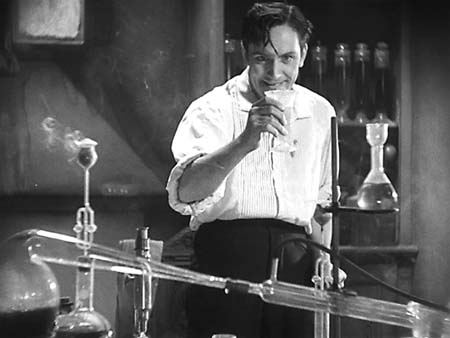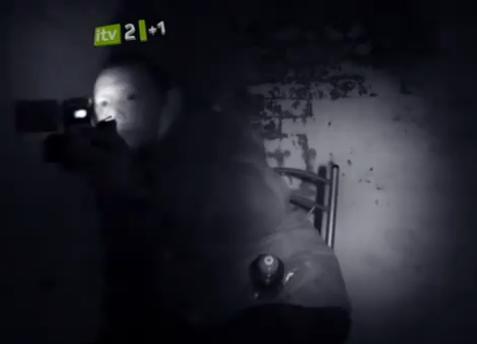You have no items in your cart. Want to get some nice things?
Go shoppingAldous Huxley reckoned science and literature were alike because both observe the world and attempt to interpret it in words. Fair enough, but when science is described in literature, there’s some pretty poor methodology on show. If real scientists ever behaved like their fictional counterparts, Dolly the Sheep would have headed up an ovine clone army intent on world domination.
Some dubious experiments crop up in early literature, like Icarus testing his dad’s aeronautical design with scant regard for health and safety guidelines, or Dr Faustus deciding that after nailing all the academic subjects, his next step should be to try summoning a devil (I’d like to have seen the funding application for that one).

The Enlightenment brought about a revolution in scientific method, and nothing was off-limits to the enquiring mind. Authors like Jonathan Swift sent up the hubris of the harebrained experimentalists. Gulliver visits the grand academy of Lagado on his Travels, where bearded boffins carry out ridiculous experiments, from extracting sun from cucumbers to “an operation to reduce human excrement to its original food.”
Mad scientists were soon getting down to business, meddling with incomprehensible forces and unleashing uncontrollable evils with wild abandon. Mary Shelley’s Victor Frankenstein made his appearance in 1818, for some reason under the impression that reanimating a corpse might turn out alright. Frankenstein is the daddy of many crazed fictional offspring, from unhinged vivisectionist Dr. Moreau to wild-eyed time machinist Doc Emmett Brown.
The Victorian era saw the appearance of a plethora of fictional scientists whose methods would make a peer-review panel blush. In Stevenson’s The Strange Case of Dr. Jekyll and Mr. Hyde, Dr. Jekyll goes for the trusty experimental method known as “downing the stuff yourself to see what happens”.
Jekyll manages to separate out the dark, animalistic part of his character with such success that it needs its own moniker and a separate entrance to his house. Unfortunately, instead of refining the civilised part of the human soul too, Jekyll is eventually destroyed by Hyde. (Never would have happened if he’d done trials on mice first.)
In H.G. Well’s The Invisible Man, Griffin discovers the secret of invisibility, a condition which sends him mad. Although, just how sane he starts out is questionable: laughing in the face of the concept of controlled clinical trials, he also decides that the most effective way of proving his theory is to try it out on himself.
Raving researchers aside, science and satire have remained close companions: in 1925, Mikhail Bulgakov’s Professor Preobrazhensky implants a human pituitary gland and testicles into a stray dog in The Heart of a Dog. The mutt Sharik turns into a human, but with his dog’s habits intact, he’s coarse and boorish with a terrible taste in ties (and if dogs wore ties, they would surely be terrible ones). Sharik becomes a send-up of Communism’s grand experiment to transform the proletariat into New Soviet man.

The temptation to mix pseudo-scientific experiment and the supernatural has been too much for some authors to resist. Experimenting on spectres never turns out well, as a rule. In Shirley Jackson’s The Haunting of Hill House, a Dr Montague (where he got his doctorate is never specified), decides it would be a good idea to choose his researchers based, not on their scientific credentials or academic publication record as you might expect, but on their state of mental imbalance, reasoning that the needy and unstable are more likely to see ghosts. (An approach later adopted by the production team of ITV2’s Ghost Hunting with the Happy Mondays, who came up with the genius idea of locking Sean Ryder in a haunted cellar with a camera.)
The Haunting of Hill House is a genuinely unsettling book, uncovering more about neurosis than it does about spooks. Dr Montague’s experiment doesn’t prove the existence of ghosts, but it does prove that locking four unbalanced people in a house produces unpleasant results. And for all their similarities, that’s where science and literature part company. Scientific experiments attempt to prove things about the world around us, whereas the literary experiment is more interested in what’s inside.

About Emily Cleaver
Emily Cleaver is Litro's Online Editor. She is passionate about short stories and writes, reads and reviews them. Her own stories have been published in the London Lies anthology from Arachne Press, Paraxis, .Cent, The Mechanics’ Institute Review, One Eye Grey, and Smoke magazines, performed to audiences at Liars League, Stand Up Tragedy, WritLOUD, Tales of the Decongested and Spark London and broadcasted on Resonance FM and Pagan Radio. As a former manager of one of London’s oldest second-hand bookshops, she also blogs about old and obscure books. You can read her tiny true dramas about working in a secondhand bookshop at smallplays.com and see more of her writing at emilycleaver.net.





I was hoping to find more about the (too me at least) obvious parallels between the Experimental Method of science and Experimental Literature generally – ie. ‘writing the stuff yourself to see what happens’.
Quote: “Scientific experiments attempt to prove things about the world around us, whereas the literary experiment is more interested in what’s inside.”
Perhaps what is seemingly ‘inside’ has produced all we see ‘around us’ – including Science. It’s this false binary reductionism which continues to get our troubled species in a lot of hot water..
– Henry Swanson